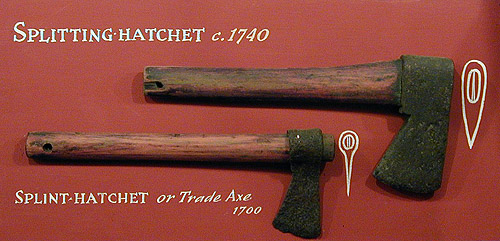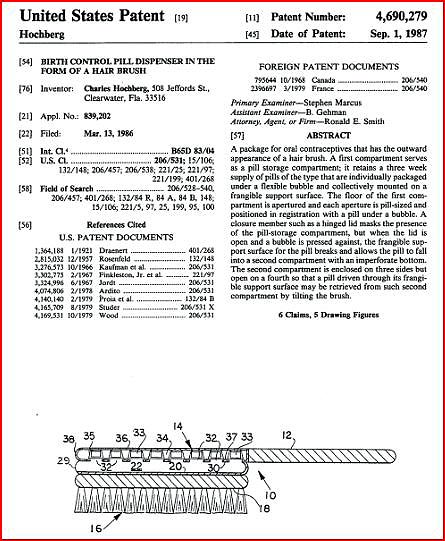What's New
by Andrew Boyd
Today, what's new? The University of Houston's College of Engineering presents this series about the machines that make our civilization run, and the people whose ingenuity created them.
There's a story told about a collector who owned the hatchet used by George Washington to chop down the famous cherry tree. When asked about the hatchet's authenticity, the collector replied, "Oh, it's the original. I've had to change the handle twice and the blade once, but it's most definitely the original."

The collector clearly doesn't understand what it means for something to be new. New is a simple enough concept. Or is it?
The U. S. Patent office deals with the question of what's new every day. Patents, which provide legal ownership to the patent holder, may be issued to anyone who "invents, or discovers any new and useful process, machine, manufacture, or composition of matter." If you invent something new and useful, you can patent it. But that leaves patent examiners — and there are over five thousand of them in the United States — to determine if your invention is new and useful. Is a Halloween mask with a flashing light really new? How about a towel with an attached towel hanger? A combination hair brush / birth control pill dispenser? According to a review of recently granted patents, the answer is yes.

What's new is of special concern in the world of software. Online retailer Amazon started a furor with its "one-click" patent. If you see a button on a web page that lets you buy with a single mouse click, it was invented by Amazon. The U. S. Patent Office says so.
How about newness in the arts? When I change one note of a song, it's different, but is it a new song? What if I change the original orchestration but keep the melody? When a composer spends weeks creating an arrangement of Jingle Bells, is it new, or is it the same old Jingle Bells?
Or consider writing. When someone sits down to write an essay, the words are new. But new words don't constitute new ideas. It's all too easy to simply repeat what someone else has said. That's one of the biggest mistakes students make when learning to write. Educating students about what makes something new is one of a teacher's most important jobs.
Medicine and bioengineering have raised all sorts of questions about what it means to be new. When a patient has a pacemaker implanted, we'd all agree we haven't created a new person. But do we have a new person when we use genetically engineered cells to replace ailing tissues? Or electronic implants to control behavior? We don't even have to look to technology to ask the question. Our bodies constantly changing. Cells die and are replaced. Our bodies are replenished by the food we eat. If we take the analogy with George Washington's hatchet to its logical extreme, are we really the same people we were five years ago? Or are we new? It would certainly give new meaning to the expression, "re-inventing yourself."
I'm Andy Boyd at the University of Houston, where we're interested in the way inventive minds work.
See, among other related Engines episodes, Patent Law Episode 418.
J. Gleick. Patently Absurd. New York Times, March 12, 2000. See also
http://query.nytimes.com/gst/fullpage.html?res=
9A0DE0DD1238F931A25750C0A9669C8B63.
Accessed October 14, 2008.
The patents mentioned in this episode include Halloween Mask with Flash Device (U. S. Patent No. 6,035,447), Hands Free Towel Carrying System (U. S. Patent No. 6,718,554), and Birth Control Pill Dispenser in the Form of a Hair Brush (U.S. Patent No. 4,690,279).
The hatchets picture was taken by John Lienhard. The picture of the patent is taken from the web site of the U. S. Patent Office.